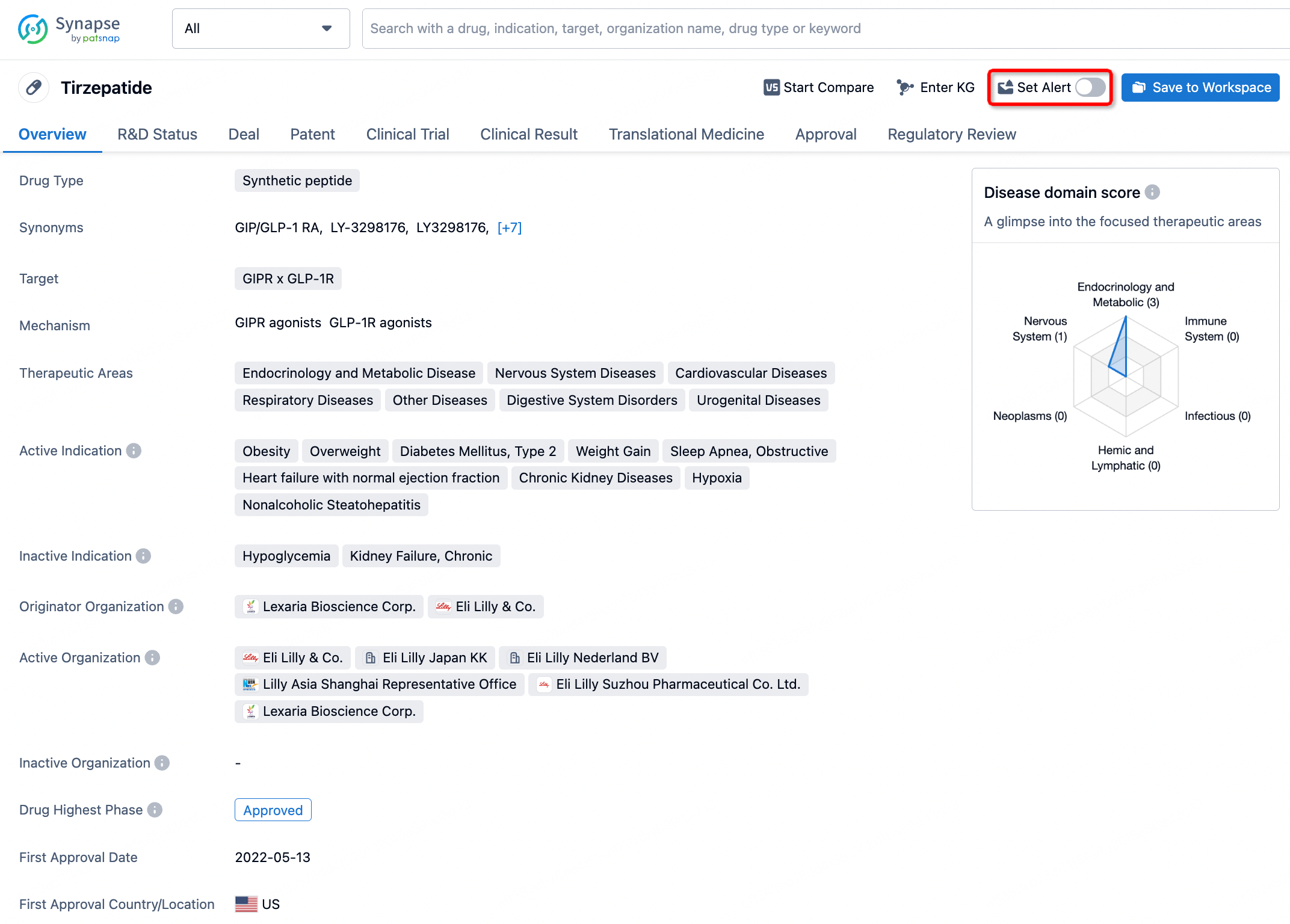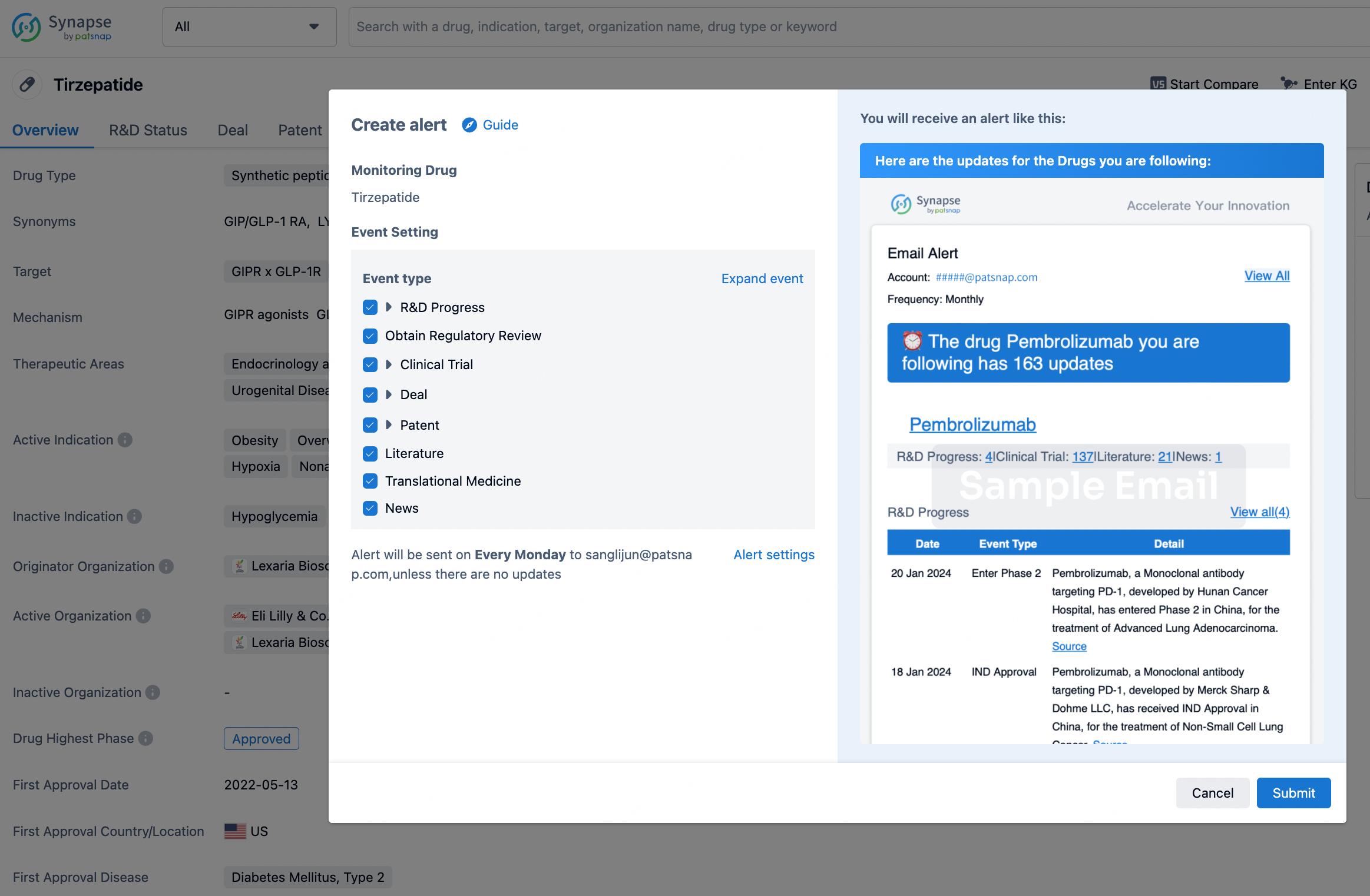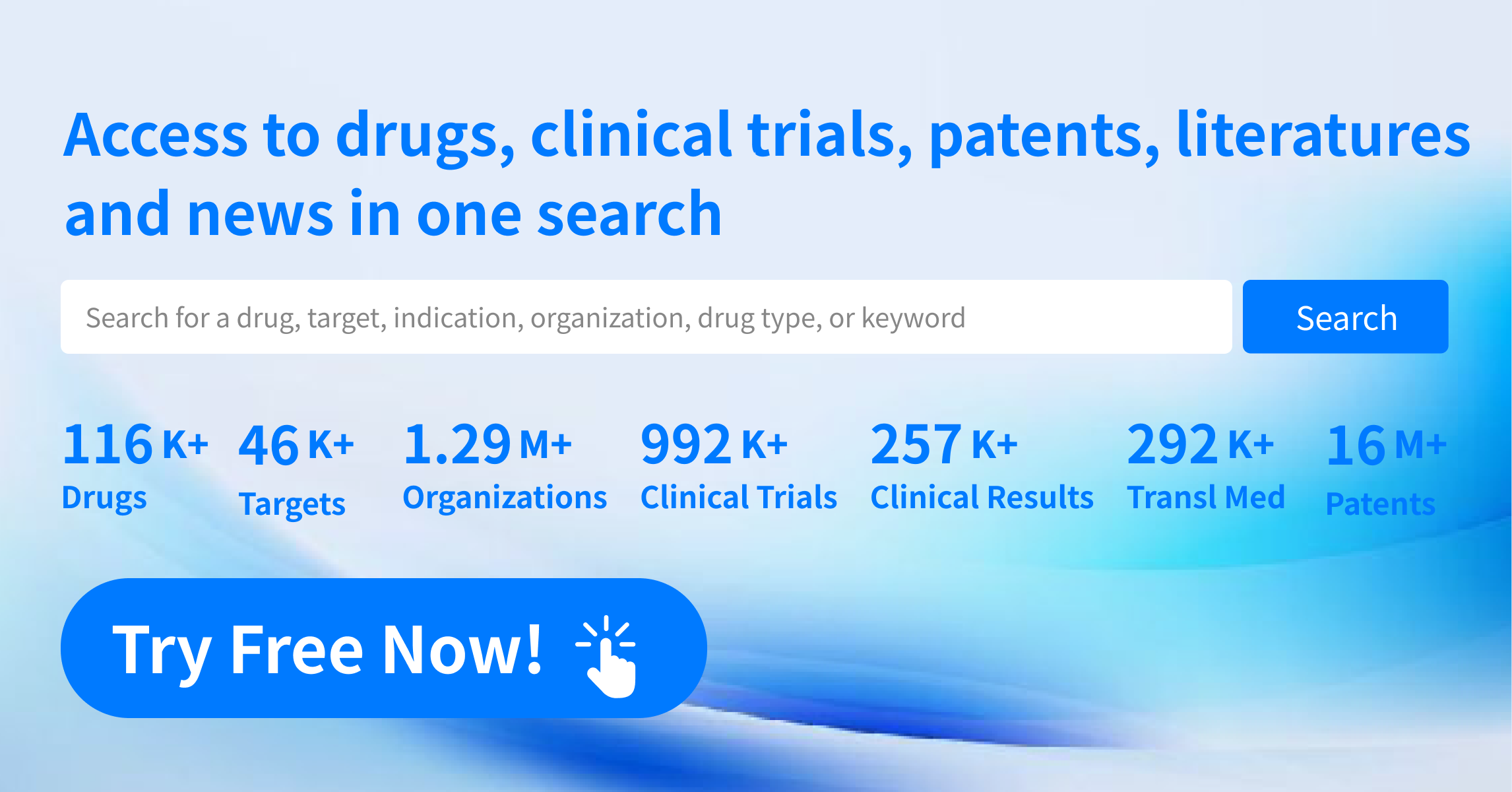Request Demo
What is Methylbenactyzium Bromide used for?
15 June 2024
Methylbenactyzium Bromide, also known by its trade names such as Cantabron and Epipheline, is a medication primarily utilized for its anticholinergic properties. It serves as a muscle relaxant and antispasmodic, making it a valuable treatment option for various gastrointestinal and respiratory conditions. The drug is classified under antimuscarinic agents, specifically targeting the muscarinic acetylcholine receptors in smooth muscles and glands. These receptors play a critical role in the contraction of smooth muscles and the secretion of glands. By inhibiting these receptors, Methylbenactyzium Bromide alleviates muscle spasms and reduces secretions.
Methylbenactyzium Bromide has been the subject of extensive research by various institutions focused on pharmacology and gastrointestinal medicine. It is indicated for use in conditions such as irritable bowel syndrome (IBS), peptic ulcers, and chronic obstructive pulmonary disease (COPD). The drug has shown promising results in clinical trials, particularly in reducing the severity and frequency of muscle spasms in patients suffering from these conditions. The research progress has been significant, leading to its approval in several countries and its inclusion in treatment guidelines for specific indications.
Methylbenactyzium Bromide works by selectively blocking the action of acetylcholine at muscarinic receptors in the smooth muscles and glands. Acetylcholine is a neurotransmitter that facilitates communication between nerves and muscles. When acetylcholine binds to its receptors, it triggers muscle contractions and gland secretions. By inhibiting this binding, Methylbenactyzium Bromide prevents these actions, leading to muscle relaxation and reduced secretions.
The drug's antimuscarinic effect is particularly beneficial in conditions where muscle spasms and excessive secretions are problematic. For example, in irritable bowel syndrome, the smooth muscles of the gastrointestinal tract can contract excessively, leading to pain and discomfort. Methylbenactyzium Bromide helps relax these muscles, thereby alleviating symptoms. Similarly, in chronic obstructive pulmonary disease, the drug can reduce bronchial secretions and ease breathing.
Methylbenactyzium Bromide can be administered via various methods depending on the condition being treated and the patient's overall health. The most common forms of administration are oral tablets and injectable solutions. For gastrointestinal conditions like IBS and peptic ulcers, oral tablets are typically prescribed. These tablets should be taken with water, and it is advisable to follow the prescribed dosage exactly to avoid any potential complications.
For respiratory conditions such as COPD, the drug is often administered as an injectable solution. Healthcare professionals typically administer these injections in a clinical setting to ensure proper dosage and monitor for any immediate adverse reactions. The onset time for Methylbenactyzium Bromide varies depending on the method of administration. Oral tablets generally take about 30 minutes to an hour to start working, while injectable forms can have a more rapid onset, often within minutes.
As with any medication, Methylbenactyzium Bromide can have side effects. The most common side effects include dry mouth, blurred vision, constipation, and urinary retention. These effects are primarily due to the drug's anticholinergic properties, which reduce secretions and relax smooth muscles. Patients may also experience dizziness or drowsiness, particularly when they first start taking the medication.
More severe side effects are less common but can occur. These include tachycardia (rapid heart rate), confusion, and hallucinations. If any of these symptoms occur, it is crucial to seek medical attention immediately. Contraindications for the use of Methylbenactyzium Bromide include conditions like glaucoma, myasthenia gravis, and obstructive uropathy. Patients with a history of hypersensitivity to anticholinergic drugs should also avoid this medication.
Interactions with other drugs can significantly impact the effectiveness and safety of Methylbenactyzium Bromide. For instance, combining it with other anticholinergic drugs can exacerbate side effects like dry mouth, constipation, and urinary retention. Medications such as antihistamines, tricyclic antidepressants, and certain antipsychotics fall into this category and should be used cautiously or avoided altogether.
Additionally, drugs that affect the central nervous system, like sedatives and tranquilizers, can enhance the drowsiness and dizziness associated with Methylbenactyzium Bromide. Alcohol can also amplify these effects and should be avoided while taking the medication. It is essential to inform healthcare providers of all medications, including over-the-counter drugs and supplements, to prevent potential interactions and ensure safe and effective treatment.
In conclusion, Methylbenactyzium Bromide is a versatile anticholinergic medication with a range of applications in treating gastrointestinal and respiratory conditions. Its ability to relax smooth muscles and reduce secretions makes it effective in alleviating symptoms associated with these disorders. However, like all medications, it comes with potential side effects and interactions that must be carefully managed. By adhering to prescribed dosages and being aware of potential drug interactions, patients can benefit from the therapeutic effects of Methylbenactyzium Bromide while minimizing risks. As research continues, it is likely that new applications and improved formulations will further enhance its clinical utility.
Methylbenactyzium Bromide has been the subject of extensive research by various institutions focused on pharmacology and gastrointestinal medicine. It is indicated for use in conditions such as irritable bowel syndrome (IBS), peptic ulcers, and chronic obstructive pulmonary disease (COPD). The drug has shown promising results in clinical trials, particularly in reducing the severity and frequency of muscle spasms in patients suffering from these conditions. The research progress has been significant, leading to its approval in several countries and its inclusion in treatment guidelines for specific indications.
Methylbenactyzium Bromide works by selectively blocking the action of acetylcholine at muscarinic receptors in the smooth muscles and glands. Acetylcholine is a neurotransmitter that facilitates communication between nerves and muscles. When acetylcholine binds to its receptors, it triggers muscle contractions and gland secretions. By inhibiting this binding, Methylbenactyzium Bromide prevents these actions, leading to muscle relaxation and reduced secretions.
The drug's antimuscarinic effect is particularly beneficial in conditions where muscle spasms and excessive secretions are problematic. For example, in irritable bowel syndrome, the smooth muscles of the gastrointestinal tract can contract excessively, leading to pain and discomfort. Methylbenactyzium Bromide helps relax these muscles, thereby alleviating symptoms. Similarly, in chronic obstructive pulmonary disease, the drug can reduce bronchial secretions and ease breathing.
Methylbenactyzium Bromide can be administered via various methods depending on the condition being treated and the patient's overall health. The most common forms of administration are oral tablets and injectable solutions. For gastrointestinal conditions like IBS and peptic ulcers, oral tablets are typically prescribed. These tablets should be taken with water, and it is advisable to follow the prescribed dosage exactly to avoid any potential complications.
For respiratory conditions such as COPD, the drug is often administered as an injectable solution. Healthcare professionals typically administer these injections in a clinical setting to ensure proper dosage and monitor for any immediate adverse reactions. The onset time for Methylbenactyzium Bromide varies depending on the method of administration. Oral tablets generally take about 30 minutes to an hour to start working, while injectable forms can have a more rapid onset, often within minutes.
As with any medication, Methylbenactyzium Bromide can have side effects. The most common side effects include dry mouth, blurred vision, constipation, and urinary retention. These effects are primarily due to the drug's anticholinergic properties, which reduce secretions and relax smooth muscles. Patients may also experience dizziness or drowsiness, particularly when they first start taking the medication.
More severe side effects are less common but can occur. These include tachycardia (rapid heart rate), confusion, and hallucinations. If any of these symptoms occur, it is crucial to seek medical attention immediately. Contraindications for the use of Methylbenactyzium Bromide include conditions like glaucoma, myasthenia gravis, and obstructive uropathy. Patients with a history of hypersensitivity to anticholinergic drugs should also avoid this medication.
Interactions with other drugs can significantly impact the effectiveness and safety of Methylbenactyzium Bromide. For instance, combining it with other anticholinergic drugs can exacerbate side effects like dry mouth, constipation, and urinary retention. Medications such as antihistamines, tricyclic antidepressants, and certain antipsychotics fall into this category and should be used cautiously or avoided altogether.
Additionally, drugs that affect the central nervous system, like sedatives and tranquilizers, can enhance the drowsiness and dizziness associated with Methylbenactyzium Bromide. Alcohol can also amplify these effects and should be avoided while taking the medication. It is essential to inform healthcare providers of all medications, including over-the-counter drugs and supplements, to prevent potential interactions and ensure safe and effective treatment.
In conclusion, Methylbenactyzium Bromide is a versatile anticholinergic medication with a range of applications in treating gastrointestinal and respiratory conditions. Its ability to relax smooth muscles and reduce secretions makes it effective in alleviating symptoms associated with these disorders. However, like all medications, it comes with potential side effects and interactions that must be carefully managed. By adhering to prescribed dosages and being aware of potential drug interactions, patients can benefit from the therapeutic effects of Methylbenactyzium Bromide while minimizing risks. As research continues, it is likely that new applications and improved formulations will further enhance its clinical utility.
How to obtain the latest development progress of all drugs?
In the Synapse database, you can stay updated on the latest research and development advances of all drugs. This service is accessible anytime and anywhere, with updates available daily or weekly. Use the "Set Alert" function to stay informed. Click on the image below to embark on a brand new journey of drug discovery!
AI Agents Built for Biopharma Breakthroughs
Accelerate discovery. Empower decisions. Transform outcomes.
Get started for free today!
Accelerate Strategic R&D decision making with Synapse, PatSnap’s AI-powered Connected Innovation Intelligence Platform Built for Life Sciences Professionals.
Start your data trial now!
Synapse data is also accessible to external entities via APIs or data packages. Empower better decisions with the latest in pharmaceutical intelligence.


